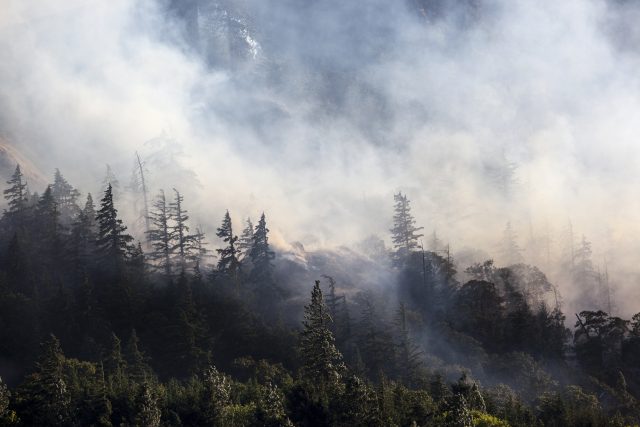This website uses cookies so that we can provide you with the best user experience possible. Cookie information is stored in your browser and performs functions such as recognising you when you return to our website and helping our team to understand which sections of the website you find most interesting and useful.
Is this the end of smoke taint?
Researchers from Oregon State University have developed a special spray-on coating that could protect grapes from being affected by wildfire smoke.

Smoke taint has been a hot topic in viticulture as climate change makes wildfires increasingly frequent. It has been a particular issue in Oregon, where recent vintages, especially that of 2020, were blighted by smoke from the fires tarnishing the aromatic profile of the grapes. Previous research from Oregon State University, published last year, shed light on the chemical markers that give smoke-trained grapes their ‘off’ flavour.
It found that while the accepted view was that volatile phenols cause the smoky/ashy flavours of affected grapes, the key chemical marker that indicates that grapes are smoke tainted is the presence of sulphur-containing thiophenols.
The new study, which was published in the Journal of Agricultural and Food Chemistry and funded by the Oregon Department of Agriculture Specialty Crop Block Grant and the US Department of Agriculture Specialty Crop Grant, examined how these compounds can be counteracted.
A cellulose nanofibre-based coating, containing chitosan and beta-cyclodextrin, was tested for effectiveness over two years at Oregon State University’s Woodhall Vineyard near Monroe and its Southern Oregon Research and Extension Centre in Central Point.
The researchers found that it successfully blocked compounds such as guaicol and syringol, while capturing meta-cresol. The distinction is crucial as blocking the compounds means that they are not absorbed (whereas capturing means they are), as Yanyun Zhao, an expert on food coatings, explained: “Not having to wash it off saves time, money and water for grape growers. That is what we are aiming for.”
Crucially, the study claims that the addition of the coating had no impact on the growth or quality of the grapes, meaning that the fruit’s aromas and phenols ripened as normal.
“Growers want something they can spray on their vines to protect them. If this becomes a commercially available thing it’s going to be a big game-changer, added Alexander Levin, director of the Southern Oregon Research and Extension Centre.
A press release from the university revealed that the research team is continuing to refine the coating, and working on a cost analysis to determine the viability of it as a solution for producers to deploy in the vineyard.
Some producers in the state have dealt with the issue of smoke taint rather differently. Patricia Green Cellars teamed up with up with local distillery Big Wild Spirits to turn 12,000 gallons of tainted Pinot Noir into premium spirits.

